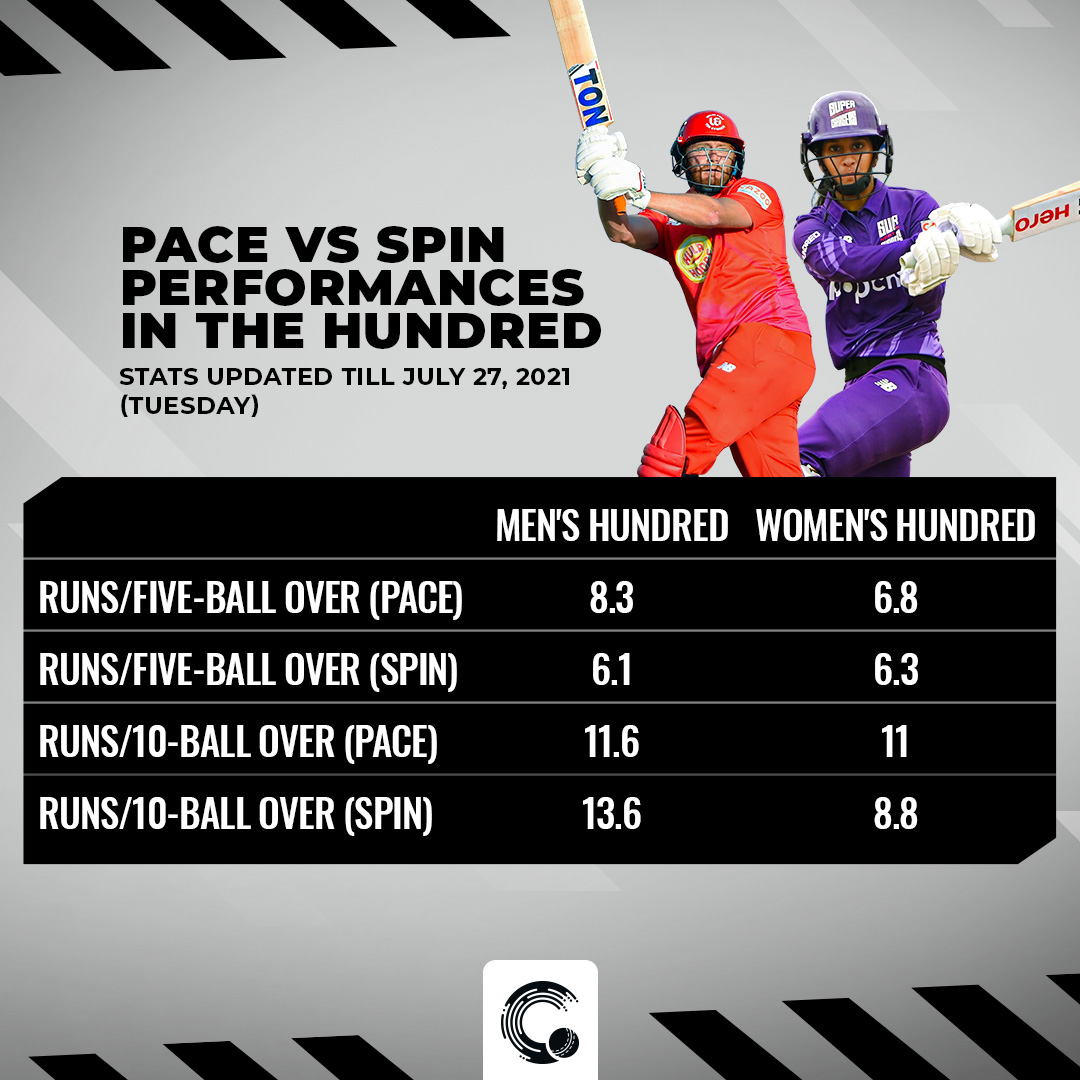 OPINION
OPINIONThe Hundred opened up with a lot of fanfare and optimism for English cricket. It created a box of interesting possibilities for the English Cricket Board (ECB) as well which is often marred by over-ambitious thoughts with a little outcome to match their narrative. As the first week of the event is done and dusted, it is prudent to go back and understand where do the ECB and its stakeholders stand in the grander scheme of things.
Women’s Hundred can potentially stir up a revolution
Women’s sports in Australia and England are far more organised than in any other cricket-playing nation. It has reflected in the players’ performances as well and the Women’s Hundred bore testimony to the same. While the non-participation of many star players has cluttered the men’s event, the women’s competition has found a lot of interest especially in India - the biggest market for the sport - thanks to the involvement of the likes of Smriti Mandhana, Jemimah Rodrigues, Deepti Sharma, Shafali Verma, and Harmanpreet Kaur. That Mandhana and Rodrigues won three Player of the Match awards in the first week added to the fanfare.
According to BARB data, the opening night of The Hundred was the most-watched women’s cricket match in UK history, with a peak audience of 1.95 million. While the peak time BBC Two broadcast registered a high of 1.6 million viewers, further 180,000 live streams on iPlayer and BBC Sport online made it a historic affair. While the statistics are attractive, with a major audience involving females, the fact that the cricket on offer in the Women’s Hundred is really good would do a lot for the sport. You never know what kind of chain reaction it might generate in the future.
More space for a less boozy audience
The problem with the English crowd, which has often been highlighted in the traditional cricket matches, is the presence of a boozy audience. According to the study, it often discourages children and females from attending the matches at the English venues. In Trent Rockets’ first home match, which was in fact the first doubleheader of the competition, 42% of tickets were booked by children and by women, which is an encouraging sign from the competition’s inclusivity pitching.
After the Hundred has only two days of worth of starkly different audiences, the trend has been set in motion. In that regard, the ECB introducing booze-free zones following the rowdy scenes at the opening men’s match on Thursday night will do a lot of good. But from an overall understanding, the women’s event justified ECB Tournament Director Sanjay Patel’s inclusivity claims more than the men’s event have done. Will this change? Only time will tell.
Let's talk tactics?
Let’s dive into the cricketing front. The Hundred is designed to simplify cricket for a new audience. But the muscle memory doesn’t allow experienced players to be evolving at a rapid pace. It was evident throughout the course of the first week of both men’s and women’s competitions.

The captains struggled to make decisions regarding a five-ball or 10-ball patch from one bowler, with most of them depending on the rhythm of the bowler. While captains preferred to start with a 10-ball block, they resorted to a five-ball block when batters opened up their arms. You can’t really fault the skippers for it is still early days to make a judgment call. How the teams would plan their power play or define the death period is upto derivation and will have a ripple effect in terms of teams' strategies. But for now, captains would rely on instincts till analysts make sense of the format.
Is strike rotation more important in the hundred?
In a normal T20 game, if a top-order batter is unbeaten till the end of the innings or bats till the death overs, he normally plays around 50-60 balls. However, things are contrastingly different in the Hundred. That while in T20s rotating the strike might not have much of an impact, in the Hundred, it becomes even more important given a change only after 10 balls. Case in point is Jemimah Rodrigues’ innings in both matches played out pretty much like a T20 innings, with the batter facing almost 50% of the total deliveries within the partnership, in multiple instances, it was different.
Zak Crawley opened for London Spirits and was there at the crease till 96 balls. However, all he faced was 40 balls, a direct consequence of 10-ball patches keeping him away from the strike. It results in one batter staying in course at one end for a longer period of time. However, it must be kept in mind that we have a smaller sample size to denote the changes and the trend might uplift once teams figure out their plans.
What’s up with white?
In the Hundred, everything is full of colours. From the jerseys to the stands to the graphics, there is no shortage of any colours in any events, sans the white cards. Umpires show a white card towards audiences to mark the end of a five-ball cluster but does it serve any purpose? It is almost invisible on TV and if the comments of the spectators have anything to go by, invisible to the stadium audiences as well. From all accounts, this doesn’t hold any purpose and might not be in action by the next edition.